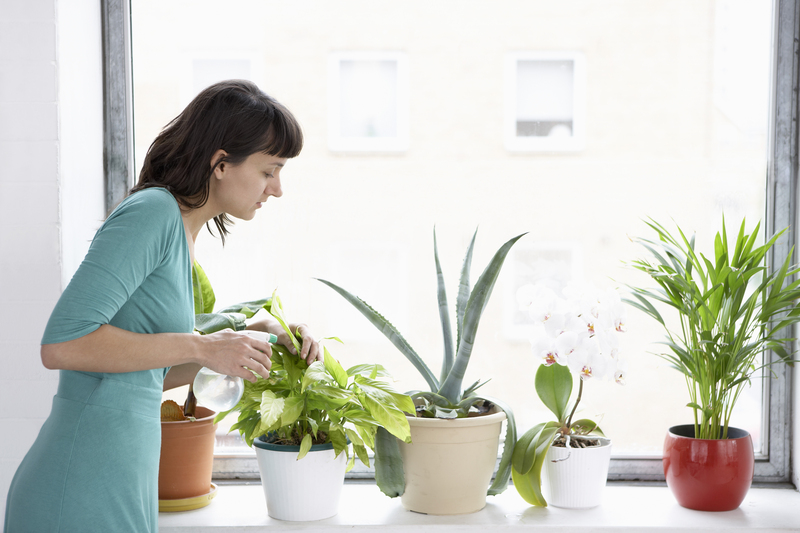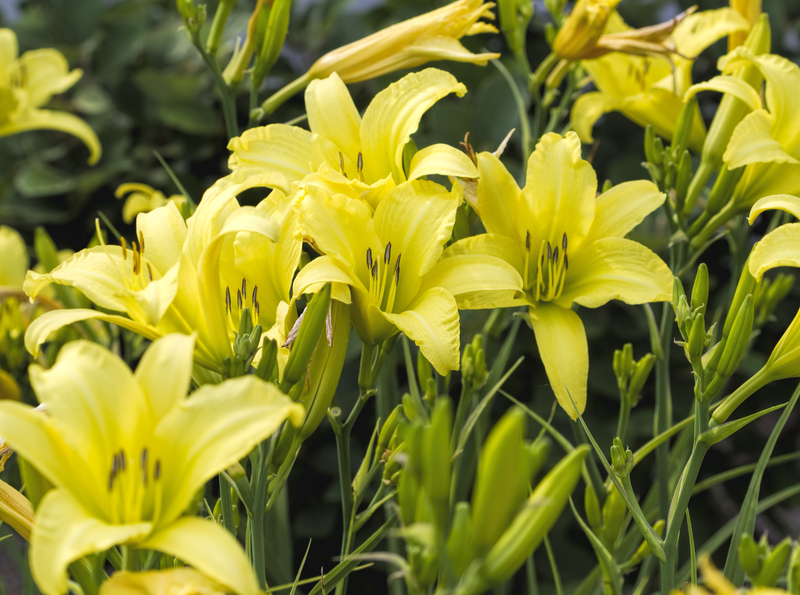Indispensable Tools for the Passionate Gardener
Posted on 03/06/2025
Indispensable Tools for the Passionate Gardener
Gardening is more than a hobby for many people--it's a way of life. Whether you're cultivating vibrant flower beds, nurturing a bountiful vegetable patch, or simply enjoying the calm of tending to nature's wonders, the right set of tools can make all the difference. In this guide, we'll explore the indispensable tools for the passionate gardener, describing their functions, benefits, and tips for getting the most out of each one. So let's dig into the essential equipment designed to help your garden flourish!
Why Quality Gardening Tools Matter
Using well-crafted gardening instruments can transform your gardening experience. Reliable tools not only make tasks easier but also help reduce strain, increase productivity, and extend the longevity of your garden landscape. For passionate gardeners, investing in quality gear is a cornerstone of long-term success. Below, you'll find a curated list of essential tools for the serious gardener, along with maintenance advice and must-know features.

Essential Hand Tools for Every Gardener
1. Hand Trowel
Your hand trowel is an absolute necessity. This compact yet powerful tool is ideal for digging, transplanting, and potting. A strong, ergonomically designed trowel will help you dig into even the toughest soils.
- Uses: Transplanting seedlings, removing weeds, digging small holes, adding soil amendments.
- Tips: Choose a stainless-steel trowel with a comfortable, non-slip grip and a sturdy blade.
2. Pruning Shears (Secateurs)
Pruning shears are key for shaping plants, deadheading flowers, harvesting herbs, and maintaining healthy growth. Bypass pruners (scissor-style) are preferable for live green wood, while anvil pruners are better for tougher branches.
- Uses: Pruning shrubs, deadheading blooms, trimming foliage, harvesting fruits and vegetables.
- Tips: Keep blades clean and sharp for precise cuts and sanitize between plants to prevent disease spread.
3. Garden Fork
The garden fork is invaluable for breaking up compacted soil, turning compost, and aerating planting beds. Its sturdy tines make it much more effective than a spade for certain challenging tasks.
- Uses: Loosening soil, digging up root vegetables, turning compost piles.
- Tips: Opt for solid-forged forks for strength and durability.
4. Hand Weeder
When it comes to weed removal, a specialized hand weeder can do wonders. Its narrow, notched blade slips under invading plants, allowing you to uproot them with minimal disturbance to surrounding roots.
- Uses: Removing dandelions and other deep-rooted weeds, clearing flower beds.
- Tips: Use after rain or watering for easier weed extraction.
5. Transplanter
A transplanter is similar to a trowel but features a narrower blade with marked depth measurements. It's the preferred choice for precise transplanting of seedlings and bulbs, ensuring the correct depth every time.
- Uses: Planting bulbs, moving seedlings, spacing out annuals.
- Tips: Look for etched or clearly marked measurements for accuracy.
Must-Have Long-Handled Garden Tools
1. Shovel or Spade
No list of essential gardening tools is complete without a sturdy shovel. Shovels and spades are essential for heavy digging, turning soil, planting trees, and moving mulch or compost. The design you choose--pointed or flat--will depend on the specific tasks in your garden.
- Uses: Digging planting holes, edging beds, moving earth, mixing amendments.
- Tips: Choose a forged steel blade and a comfortable handle length to minimize back strain.
2. Garden Hoe
The garden hoe is a versatile tool for cultivating soil, controlling weeds, and preparing seed beds. There are several types--draw hoes for digging, scuffle hoes for slicing off weeds just below the surface, and stirrup hoes for easy gliding action.
- Uses: Weed control, soil aeration, shaping rows and furrows.
- Tips: Select the type of hoe that best fits the size and type of your gardening projects.
3. Rake
Garden rakes come in all shapes and sizes, but every passionate gardener should have at least two: a sturdy bow rake for soil leveling and a flexible leaf rake for gathering leaves or debris.
- Uses: Leveling soil, spreading mulch, removing leaves and debris.
- Tips: Look for rust-resistant finishes and comfortable grips, especially if you have a large yard to manage.
4. Loppers
Loppers are essentially long-handled pruners; they provide leverage for cutting thicker branches that would be too tough for hand shears. Perfect for pruning fruit trees, shrubs, and overgrown perennials.
- Uses: Trimming branches up to 2 inches thick, shaping trees and large shrubs.
- Tips: Opt for bypass loppers with replaceable blades for cleaner cuts.
Specialty Tools for the Serious Gardener
1. Soil Knife (Hori Hori)
The Japanese-made hori hori soil knife is a multitasker's dream: dig, saw, cut, and measure with one tool. The sharp blade and measurement markings make it ideal for precise planting, weeding, and even harvesting vegetables.
- Uses: Planting bulbs, dividing perennials, slicing roots, cutting twine.
- Tips: Choose a stainless steel knife for longevity and easy cleaning.
2. Watering Tools
Proper watering is crucial for a healthy garden. Invest in an adjustable watering wand or a quality hose nozzle to control pressure and reach. For eco-friendly gardening, consider a drip irrigation system or soaker hoses for consistent, efficient watering.
- Uses: Watering beds, filling containers, irrigating delicate seedlings.
- Tips: Regularly check hoses and connections for leaks to conserve water.
3. Wheelbarrow or Garden Cart
A durable wheelbarrow eases the burden of transporting soil, mulch, plants, and more. Some gardeners prefer two-wheel carts for added stability and maneuverability over uneven terrain.
- Uses: Moving heavy materials, collecting debris, hauling harvested produce.
- Tips: Pick a size suited to your garden--compact carts are easier to store for smaller spaces.
4. Garden Kneeler and Seat
Gardening often means bending, squatting, and kneeling. Garden kneelers or cushioned seats provide ergonomic support, making gardening more comfortable and protecting your joints.
- Uses: Weeding, planting, hand-watering, or simply taking breaks.
- Tips: Many kneelers double as handy seats and come with storage pockets for hand tools.
Protective Gear: Safety First in the Garden
1. Gardening Gloves
No passionate gardener should be without a pair of tough, well-fitting gloves. Good gloves protect against thorns, blisters, splinters, and even garden pests.
- Uses: General tasks, pruning roses, digging, handling soil amendments and fertilizers.
- Tips: Nitrile-coated gloves offer flexibility and water resistance, while leather gloves are best for heavy-duty jobs.
2. Sun Protection
Time spent outdoors exposes you to sunlight and UV rays. Equip yourself with a wide-brimmed hat, premium sunscreen, and even protective sleeves to stay safe and comfortable.
- Uses: Any outdoor gardening activity, especially during peak sunlight hours.
- Tips: Lightweight, breathable fabrics prevent overheating.
3. Knee Pads
Extra knee protection goes a long way in preventing injury. Knee pads or roll-up foam mats can make hours of work in flower beds feel considerably easier on your body.
- Uses: Planting, weeding, edging beds, general ground work.
- Tips: Look for moisture-resistant materials and adjustable straps for a custom fit.
Smart Tech & Time-Saving Gadgets for Modern Gardeners
Gardening has entered the digital age, and the modern gardener's toolkit now includes innovative tech that saves time, conserves resources, and delivers valuable insights.
- Soil Moisture Meter: Accurately gauge soil moisture to support optimal plant health and water efficiency.
- Automatic Irrigation Timers: Ensure consistent watering and prevent overwatering.
- Pest and Disease Alert Apps: Get timely advice and notifications to protect your garden's well-being.
- Garden Planner Software: Plan your planting schedules, track growth, and monitor garden zones with digital tools.
Tips for Caring for Your Garden Tools
Maintaining your gardening instruments protects your investment and ensures safe, efficient operation. Here's how to keep them in tiptop shape:
- Clean after each use to remove soil, sap, and moisture that can cause rust or decay.
- Sharpen blades regularly for safer, cleaner cuts that promote plant health.
- Oil moving parts like pruner hinges or shears to keep them smooth and rust-free.
- Store tools in a dry, secure space--use hanging racks or wall organizers to prevent damage and save space.
- Inspect for wear and damage and repair or replace as needed for top performance.

Building Your Ultimate Gardening Tool Kit
Every gardener develops personal favorites, but a well-rounded gardening tool kit usually includes:
- Hand trowel and transplanter
- Pruning shears and loppers
- Garden fork and spade
- Hoe, rake, and weeder
- Wheelbarrow or garden cart
- Watering tools (hose, wand, soaker)
- Protective gloves, knee pads, and hat
- Soil knife and specialty gadgets
Conclusion: Elevate Your Gardening Experience
The indispensable tools for the passionate gardener are those that marry quality, comfort, and function, empowering you to bring your gardening vision to life. Whether you're an enthusiastic beginner or a seasoned horticulturist, investing in the best gardening equipment pays dividends in healthy plants, abundant harvests, and joyful hours outdoors. Start with the basics and add specialty tools and modern gadgets as your skills and interests grow.
Ready to take your love of gardening to the next level? Equip yourself with these must-have tools and watch your garden--and your gardening skills--thrive!

